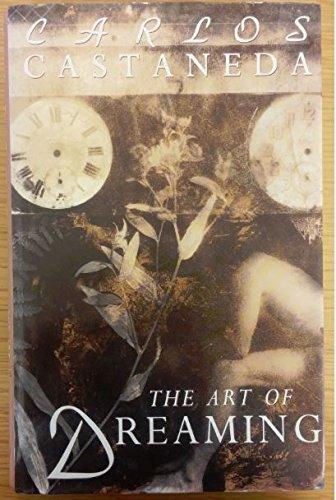The Art of Dreaming, Carlos Castaneda - a review
- carmillavoiez

- Apr 5, 2018
- 2 min read

Magic and perception are two of my special interests, so this book might easily have been written for me. As well as providing an engaging and entertaining read, it has expanded the potential of the next novel I plan to write.
The subject is fascinating. Is perception reality? Is magick simply madness? Is there a point in space, time or perception we can access that allows us not only to change our own reality but that of other people? The sceptic in me wanted to dismiss it as nonsense and my spiritual side wanted to full embrace everything and try to replicate the dreaming. In the end I just filed it away for future use, however, it made me wonder whether his description of the assemblage point and how shifts in it alter the way we perceive our surroundings might have any practical application for understanding why I and the majority of people (neurotypicals for want of a better word - I like to think of them as those who have been properly socialised to fit into the tiny space allowed to them in society) see the world around us very differently. "This social base of perception is the physical certainty that the world is made of concrete objects. I call this a social base because a serious and fierce effort is put out by everybody to guide us to perceive the world the way we do." "Our way of perceiving is a predator's way. There is another mode, the one I am familiarizing you with: the act of perceiving the essence of everything, energy itself, directly." "What they saw that made them conclude that perception takes place on the assemblage point was first, that out of the millions of the universe's luminous energy filaments passing through the entire luminous ball, only a small number pass directly through the assemblage point, as should be expected since it is small in comparison with the whole.
"Next, they saw that a spherical extra glow, slightly bigger than the assemblage point, always surrounds it, greatly intensifying the luminosity of the filaments passing directly through that glow.
"Finally, they saw two things. One, that the assemblage points of human beings can dislodge themselves from the spot where they are usually located. And, two, that when the assemblage point is on its habitual position, perception and awareness seem to be normal, judging by the normal behavior of the subjects being observed. But when their assemblage points and surrounding glowing spheres are on a different position than the habitual one, their unusual behavior seems to be the proof that their awareness is different, that they are perceiving in an unfamiliar manner.
"The conclusion the old sorcerers drew from all this was that the greater the displacement of the assemblage point from its customary position, the more unusual the consequent behavior and, evidently, the consequent awareness and perception."




Comments